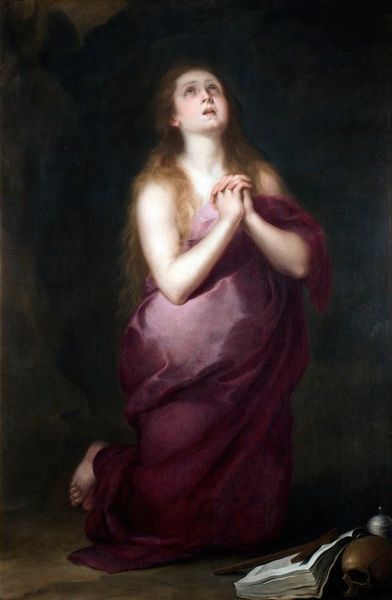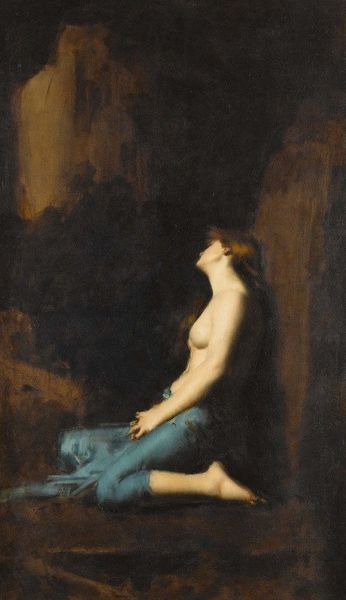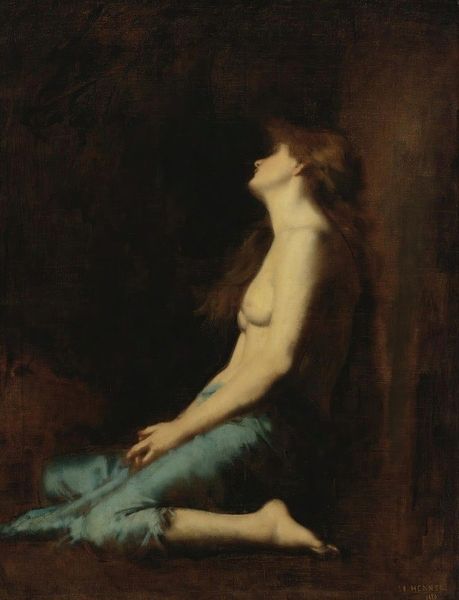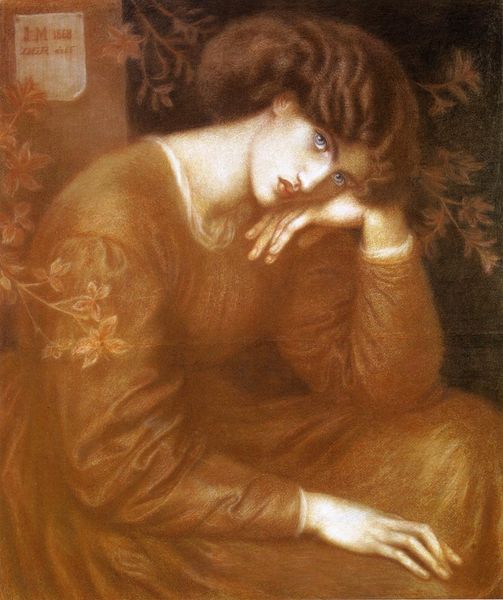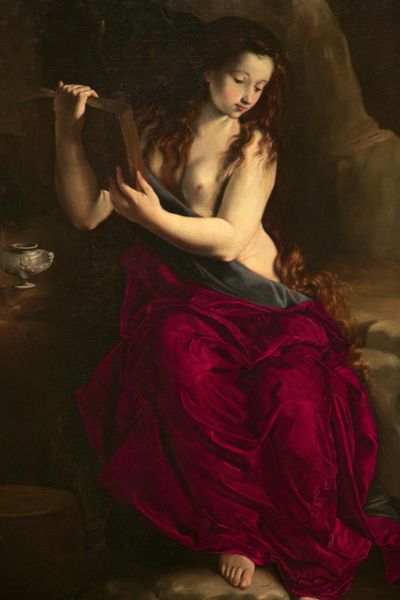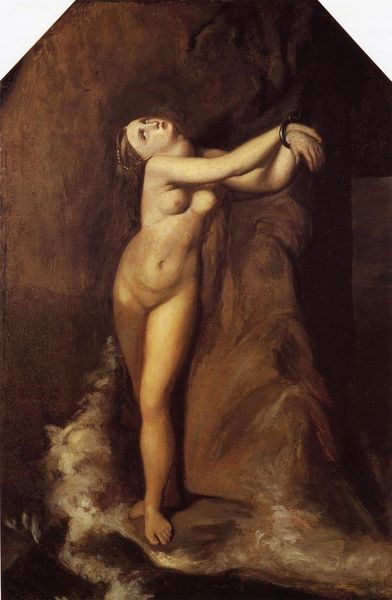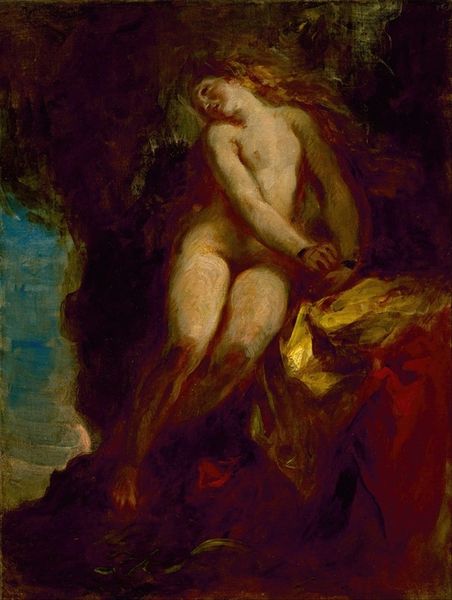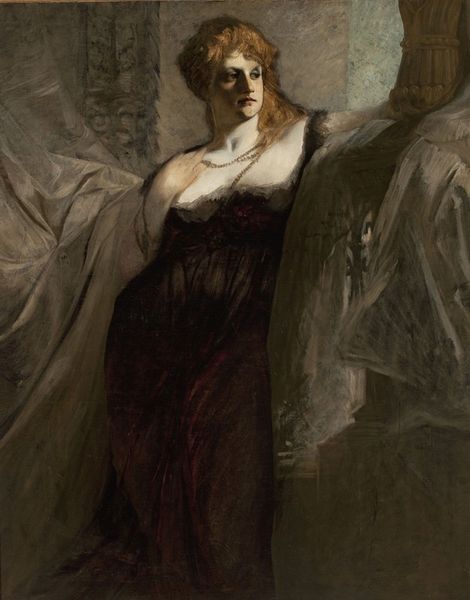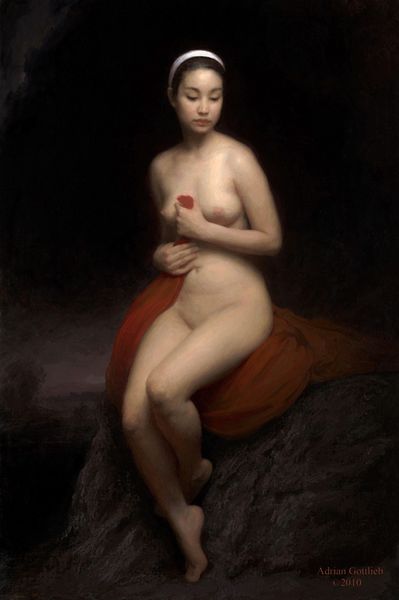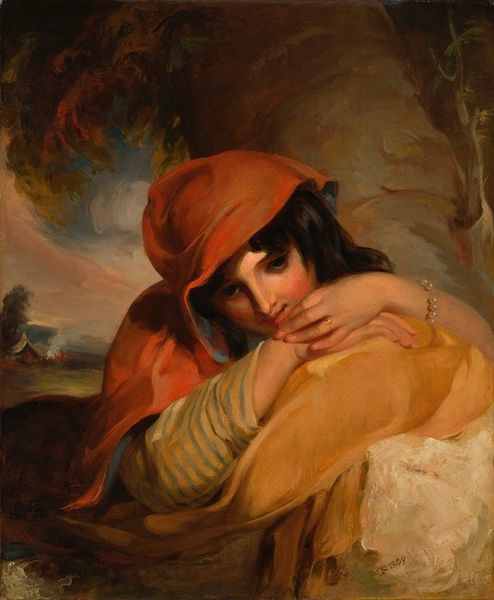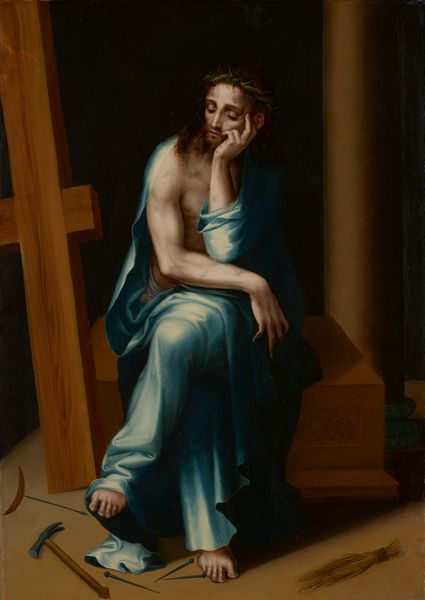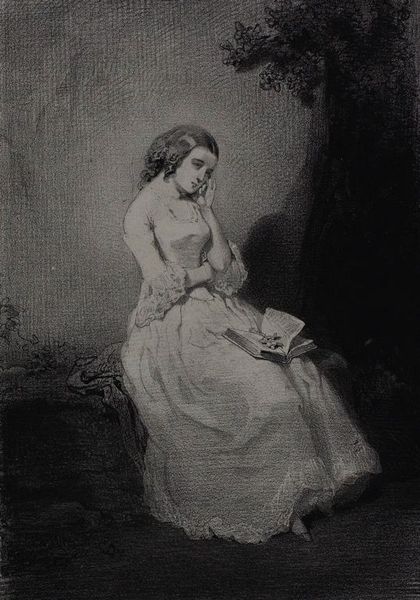
painting, oil-paint
#
portrait
#
baroque
#
painting
#
oil-paint
#
figuration
#
history-painting
#
nude
Copyright: Public Domain: Artvee
Curator: What a powerful, yet subdued, painting. It seems dominated by the red robe and that contrast between dark background and pale skin. Editor: Indeed. What we see here is "Manner of Murillo's Mary Magdalene," believed to be rendered around 1696 by Luca Giordano, utilizing oil paints in that distinctive Baroque style. Curator: Giordano certainly captures the period's flair. Look how the robe envelopes her, it’s more than just drapery, it has a sculptural, almost tangible presence due to the dramatic chiaroscuro effects. It speaks volumes about both covering and revealing the body. Editor: That play between concealment and exposure was deeply intertwined with the Baroque era's religious sensitivities. Magdalene, typically represented nude or scantily clad as a repentant sinner, underwent a fascinating transformation, becoming almost a symbol of reformed virtue. Consider the socio-political context; she reflects the period’s view on female spirituality. Curator: Fascinating, because while you read that societal impact, my gaze is trapped on her upturned eyes. It pushes me to ask if they indicate remorse, hope, or perhaps even a performative sorrow intended for a divine spectator. The semiotics here is deep: color signifies passion or penance. Her posture and lighting guide us through different interpretations. Editor: I’m with you on that ambiguity, though for contemporary audiences, its representation also evokes discussions about the artistic framing of female vulnerability. How Magdalene stories were deployed institutionally through artworks shaped understanding, that then impacted real women. Curator: The texture within that stark contrast between fabric and her flesh tells stories about Baroque art more broadly. Note how it shows both physical sensation but directs our eyes skyward... perhaps her true nakedness isn’t physical. Editor: Such representations had real-world effects though. While her pose reflects idealization and repentance within religious narratives, we also can read it with some criticism in this 21st-century context. Curator: This detailed consideration highlights the layered complexity of Baroque history paintings and religious iconography. Editor: Right. By examining it structurally alongside history, one realizes it encapsulates an array of spiritual and societal forces from then until now.
Comments
No comments
Be the first to comment and join the conversation on the ultimate creative platform.
